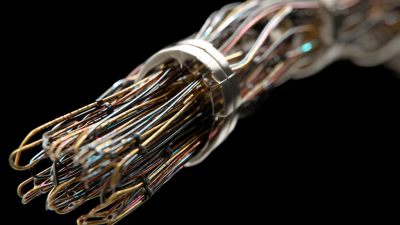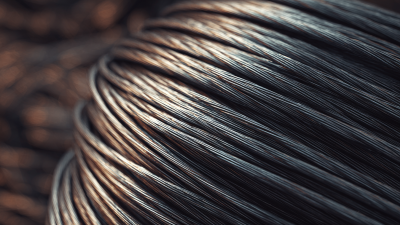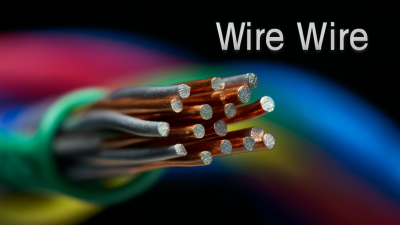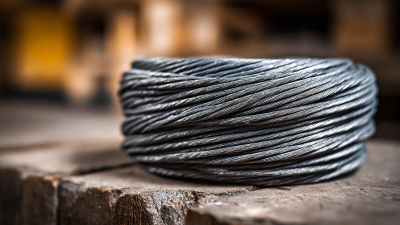In today's rapidly evolving manufacturing landscape, understanding advanced wire cutting techniques has become imperative for enhancing industry efficiency. According to a recent report by the International Wire and Cable Producers (IWCP), the global wire and cable market is projected to reach
$250 billion by 2025, primarily driven by innovations in production methods. Wire cutting, a critical process within this sector, not only improves precision and reduces waste but also significantly impacts production timelines.
As industries strive for higher productivity levels and cost-effectiveness, the adoption of sophisticated wire cutting technologies has shown to enhance operational efficiency by up to 30%. This blog aims to explore various wire cutting techniques and their transformative effects on the manufacturing process, providing insights into how they can optimize performance and sustainability in industrial applications.
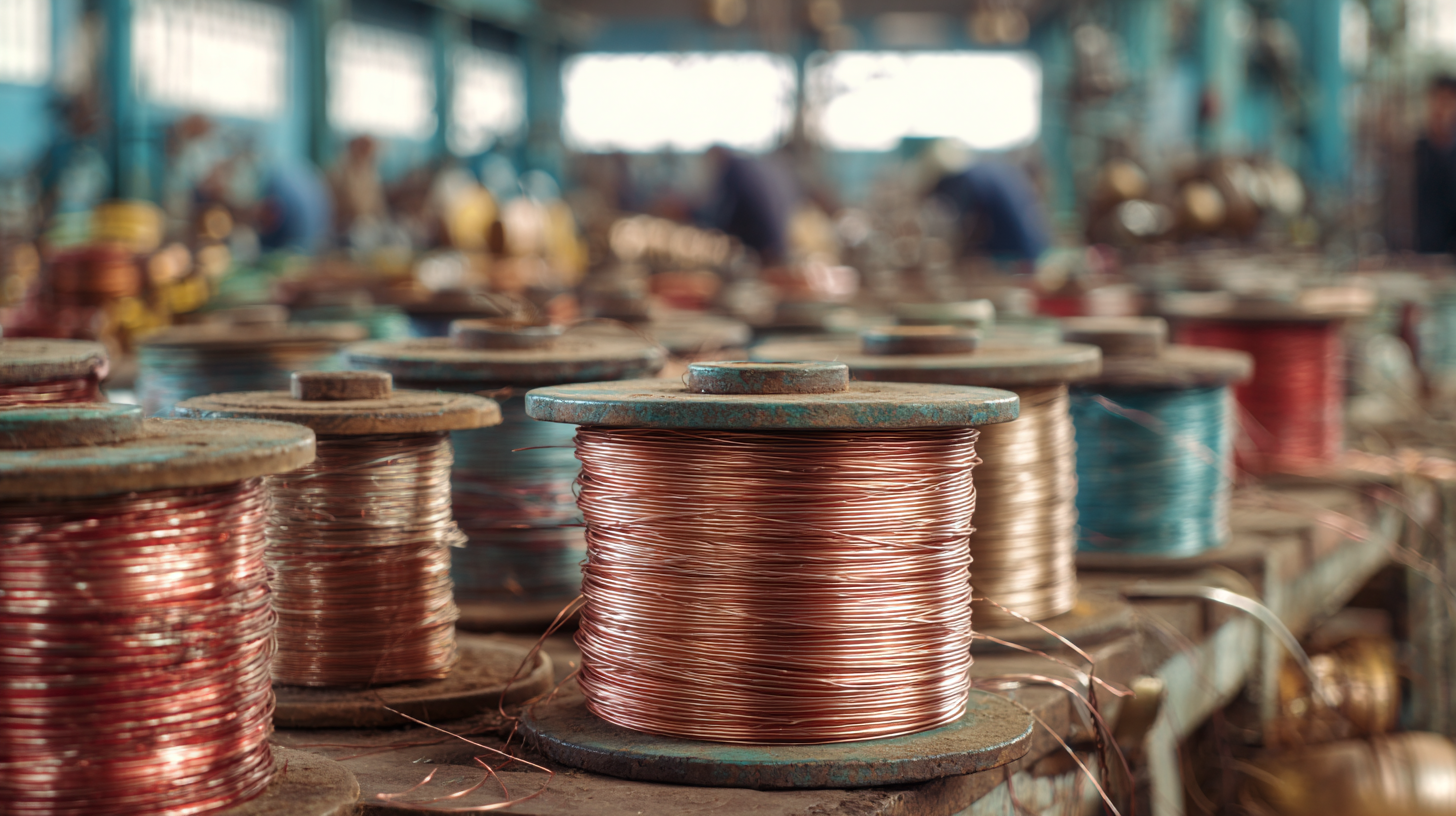
 Wire cutting techniques play a crucial role in various industries, enhancing efficiency, precision, and safety in operations. Among the most common types are plasma cutting, laser cutting, and waterjet cutting, each with unique applications and advantages. Plasma cutting, for instance, is widely used for its ability to cut through thick materials with speed and accuracy, making it ideal for heavy manufacturing sectors. Conversely, laser cutting offers superior precision and is often employed for intricate designs in automotive and aerospace applications. Waterjet cutting, known for its versatility, can handle delicate materials without altering their properties, making it a favorite in fields such as art and design.
Wire cutting techniques play a crucial role in various industries, enhancing efficiency, precision, and safety in operations. Among the most common types are plasma cutting, laser cutting, and waterjet cutting, each with unique applications and advantages. Plasma cutting, for instance, is widely used for its ability to cut through thick materials with speed and accuracy, making it ideal for heavy manufacturing sectors. Conversely, laser cutting offers superior precision and is often employed for intricate designs in automotive and aerospace applications. Waterjet cutting, known for its versatility, can handle delicate materials without altering their properties, making it a favorite in fields such as art and design.
When considering wire cutting techniques, it's essential to choose the right method for the application. Tip 1: Assess the material thickness and type to determine the most suitable cutting technique; each method has its limitations and optimal use cases. Tip 2: Consider the cost-effectiveness of each technique, including the operational costs and maintenance of cutting machines. Tip 3: Stay updated with technological advancements in cutting machinery to enhance productivity and stay competitive in the market; new innovations can significantly reduce production time and costs.
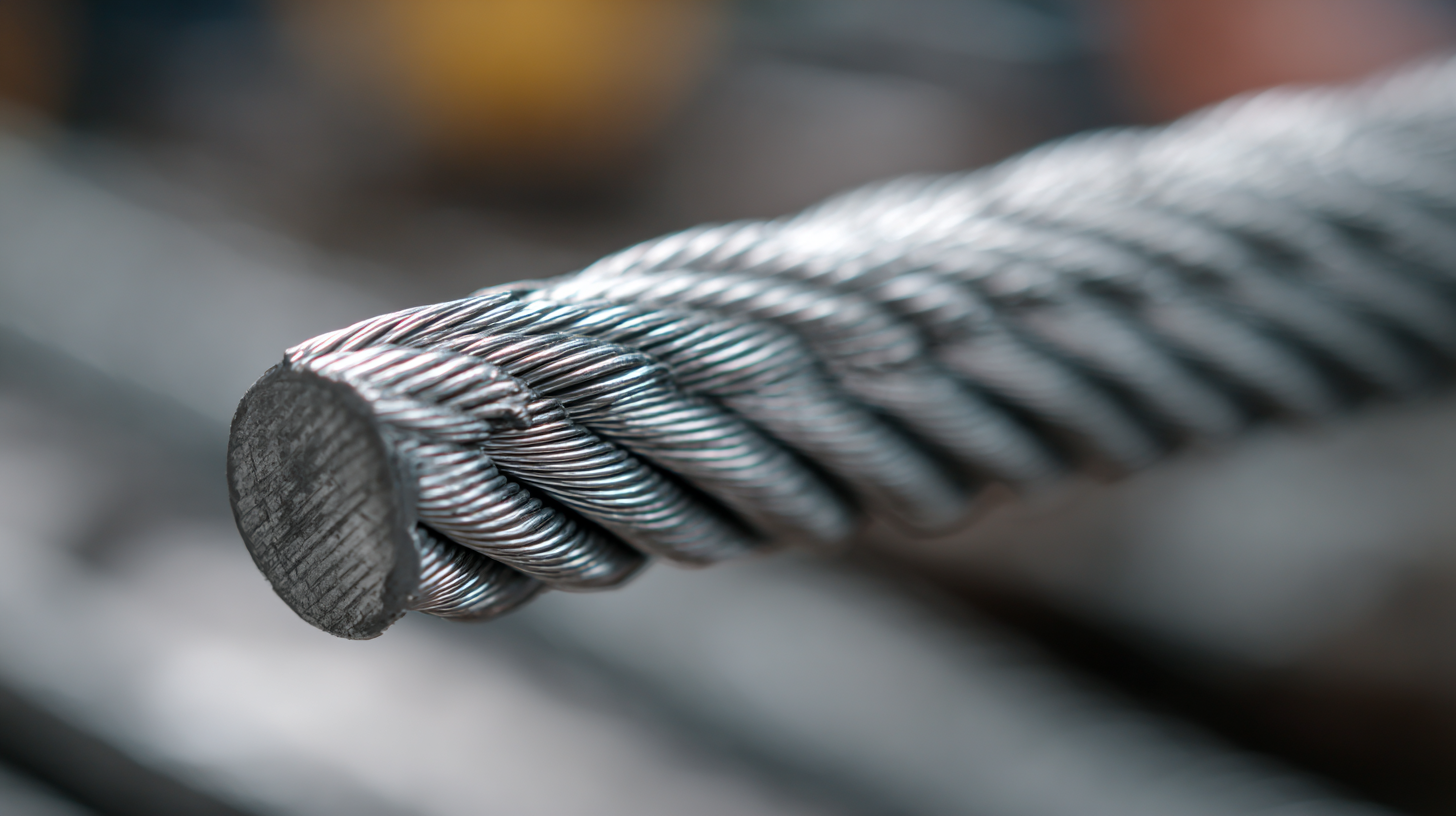 Precision in wire cutting is a critical factor that significantly influences industrial efficiency. In various manufacturing processes, the accuracy of cuts can determine the quality of the final products. When wires are cut to the exact specifications, it reduces the chances of defects, thereby minimizing waste and saving costs. For industries that rely heavily on electrical components, ensuring clean and precise cuts can enhance connectivity and overall functionality in assemblies.
Precision in wire cutting is a critical factor that significantly influences industrial efficiency. In various manufacturing processes, the accuracy of cuts can determine the quality of the final products. When wires are cut to the exact specifications, it reduces the chances of defects, thereby minimizing waste and saving costs. For industries that rely heavily on electrical components, ensuring clean and precise cuts can enhance connectivity and overall functionality in assemblies.
Moreover, advancements in wire cutting technologies, such as laser and water jet cutting, have revolutionized the way materials are handled. These techniques not only ensure precision but also speed up production times. With the ability to program specific lengths and angles, manufacturers can achieve higher levels of customization without sacrificing efficiency. This effectively streamlines operations, allowing businesses to meet demanding production schedules while maintaining high standards of quality. Consequently, investing in precise wire cutting techniques is not just a matter of accuracy; it's a strategic move towards greater operational efficiency in today's competitive industrial landscape.
In the wire cutting industry, the choice between manual and automated methods significantly influences operational efficiency. A recent report by MarketsandMarkets highlights that automation in wire cutting can enhance productivity by approximately 30% compared to manual techniques. This is primarily due to the reduced human error and increased precision offered by automated systems, which can execute complex cuts consistently and rapidly.
Moreover, the ongoing advancements in technology have paved the way for smart automated cutting machines that adapt to different wire specifications with ease. According to a study by Grand View Research, the global market for automated wire cutting solutions is projected to reach $12 billion by 2026, indicating a robust shift towards automated practices. In contrast, manual wire cutting methods, while still relevant for specialized tasks, tend to lag in efficiency and scalability; therefore, industries looking to optimize their processes are increasingly leaning towards automation to remain competitive.
| Method | Setup Time (mins) | Cutting Speed (m/min) | Energy Consumption (kWh) | Error Rate (%) | Cost per Cut ($) |
|---|---|---|---|---|---|
| Manual Cutting | 15 | 5 | 0.5 | 2 | 0.75 |
| Automated Cutting | 5 | 20 | 1.0 | 0.5 | 0.50 |
The wire cutting industry has witnessed significant advancements in technology that are reshaping its landscape. Innovations such as laser cutting, water jet cutting, and automated processes have streamlined operations, leading to enhanced precision and efficiency. These technologies not only reduce production time but also minimize waste, addressing the growing demand for sustainability in manufacturing. Companies are increasingly adopting these state-of-the-art techniques to stay competitive and meet the needs of a diverse range of industries, from automotive to electronics.
Looking forward, the future of wire cutting technology is poised for even greater transformation. The integration of artificial intelligence and machine learning algorithms is anticipated to optimize cutting processes further, allowing for real-time adjustments and predictive maintenance. These enhancements promise to improve operational efficiency, reduce costs, and elevate product quality. As the industry continues to evolve, staying abreast of these trends will be crucial for businesses seeking to leverage the full potential of wire cutting innovations.
The impact of wire cutting techniques on cost reduction and production speed is a critical consideration for industries looking to enhance operational efficiency. Advanced wire cutting methods, such as laser and water jet cutting, have revolutionized the way manufacturers approach their fabrication processes. These techniques not only offer greater precision but also minimize material waste, which directly contributes to lowering production costs. By optimizing the cutting process, companies can significantly decrease the amount of raw material needed, ultimately impacting the bottom line favorably.
Moreover, improved wire cutting technology translates to faster production speeds. Traditional cutting methods can be time-consuming and labor-intensive, often leading to bottlenecks in the production line. In contrast, automated wire cutting systems can operate continuously, providing consistent output and reducing cycle times. This efficiency allows companies to meet tight deadlines and respond swiftly to market demands. As industries continue to evolve, adopting innovative wire cutting techniques will be essential for maintaining competitiveness and driving growth.
